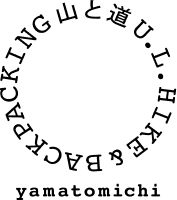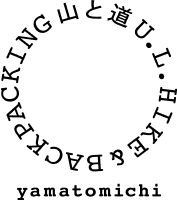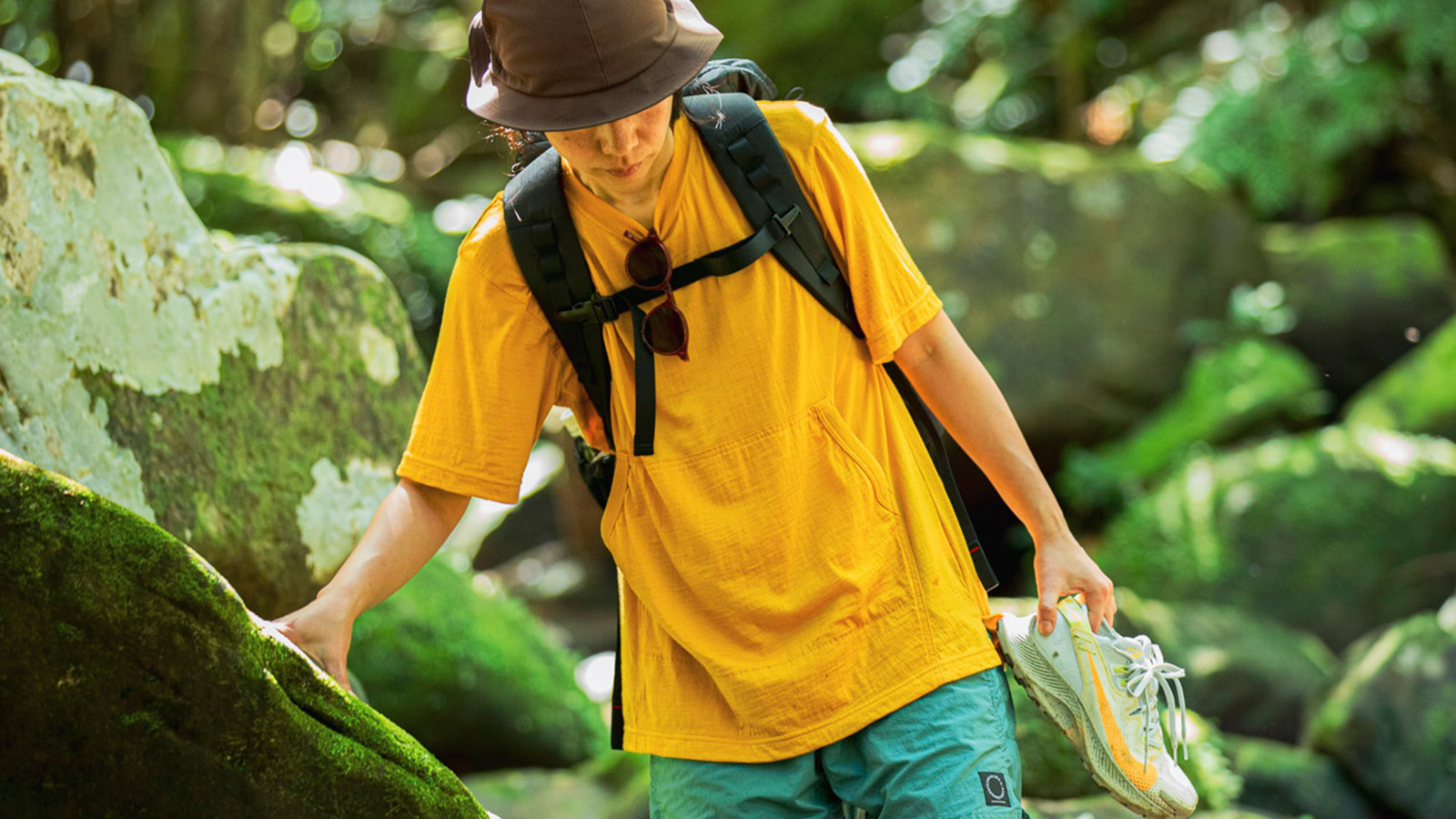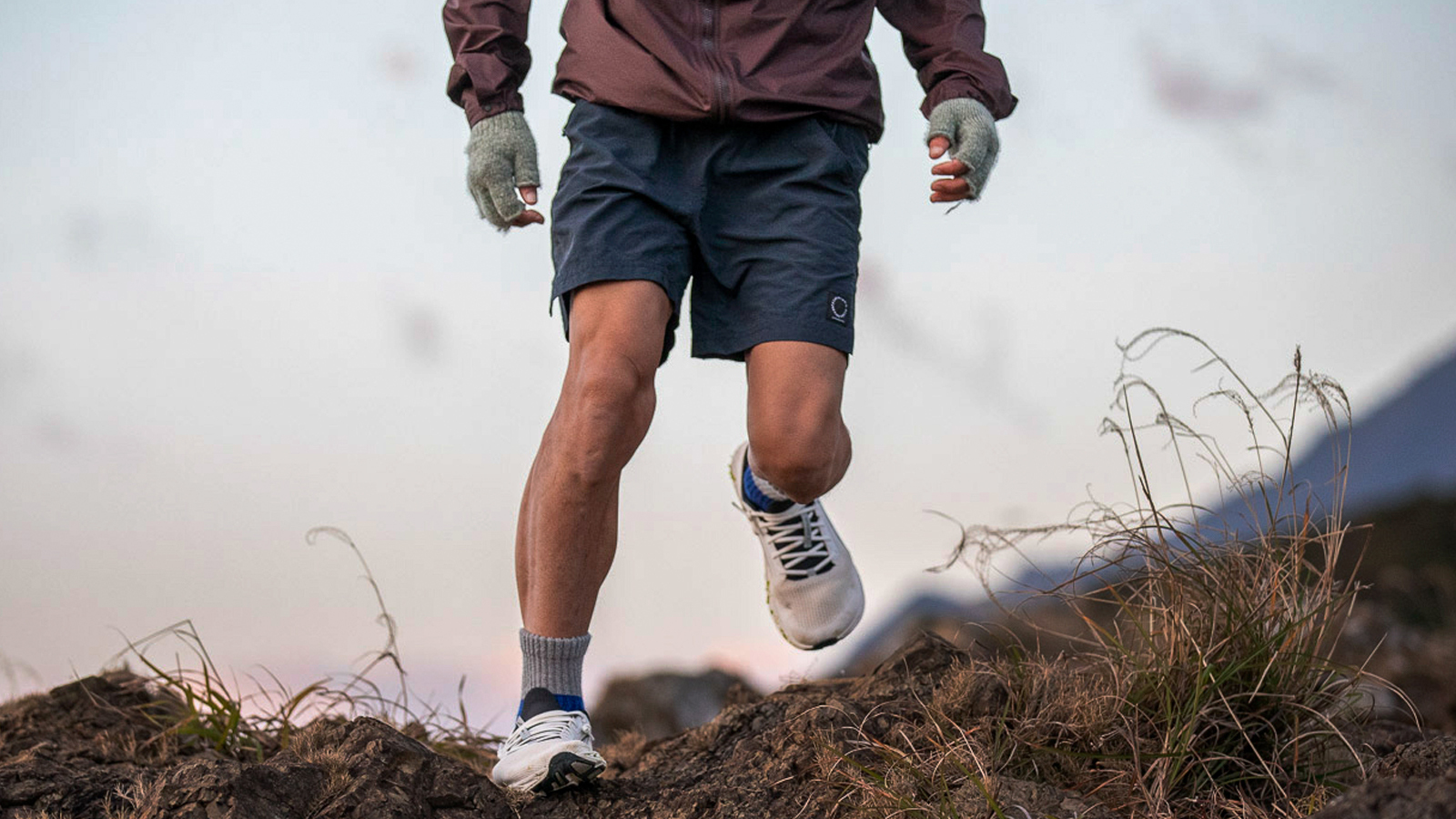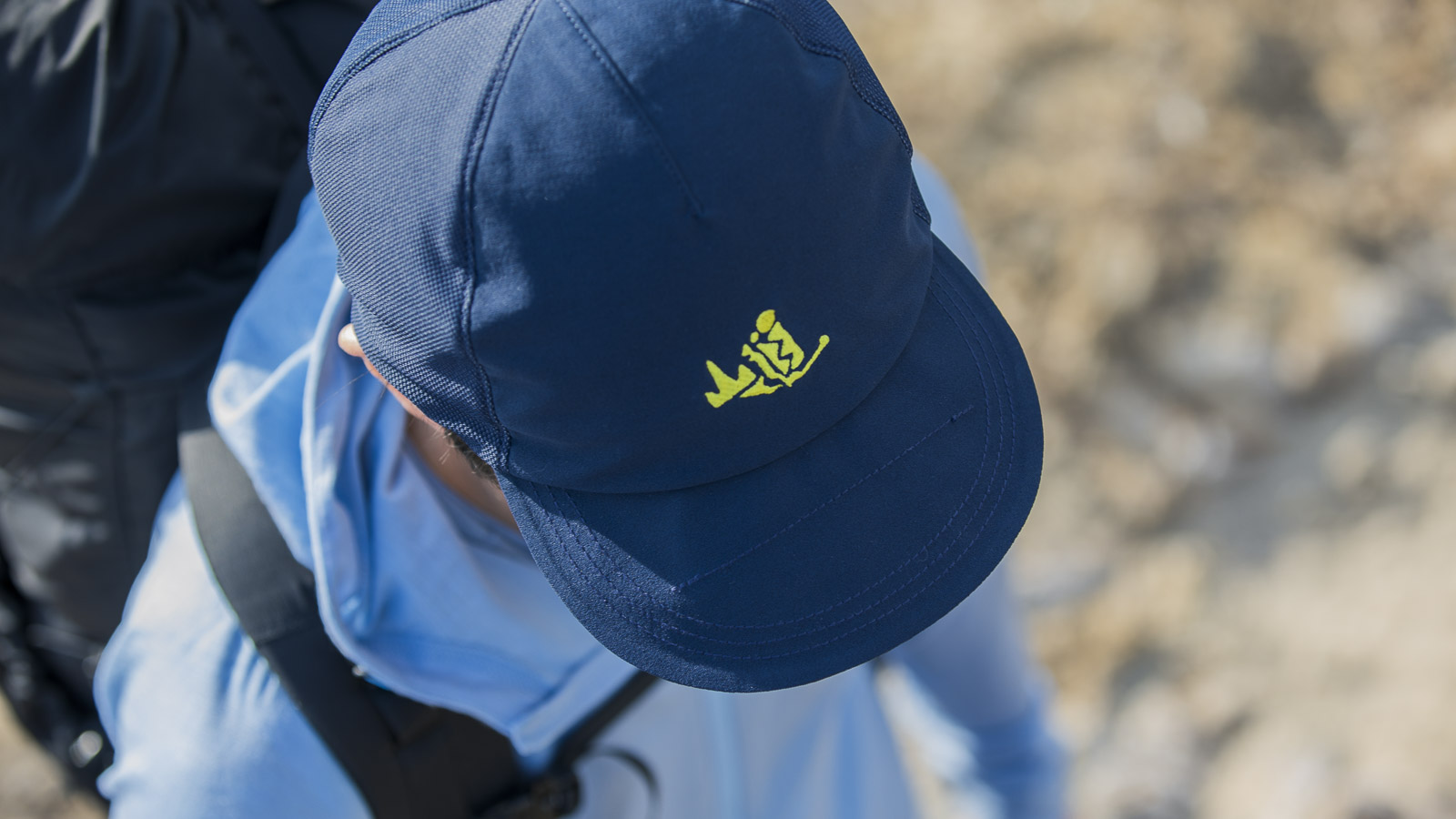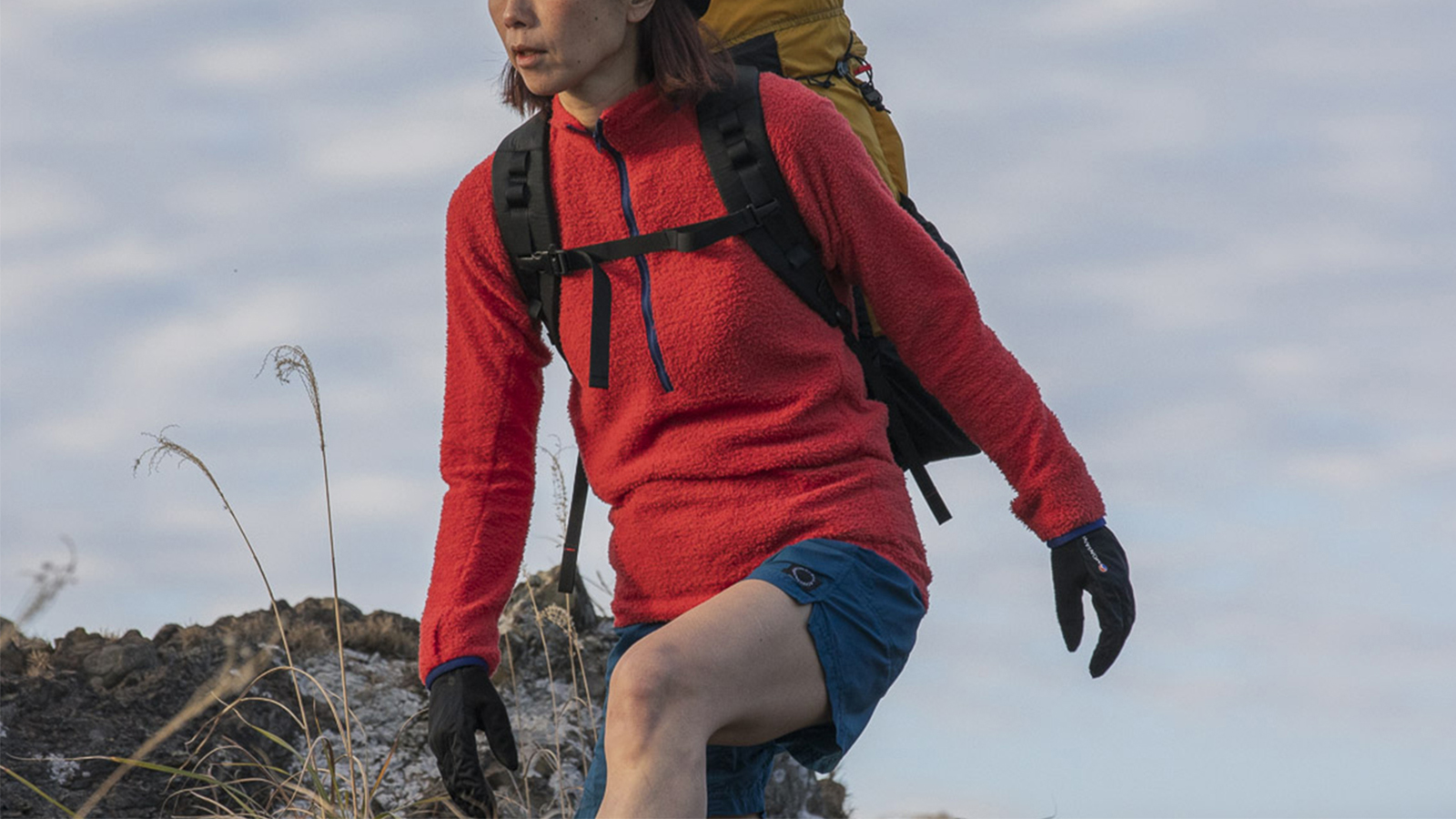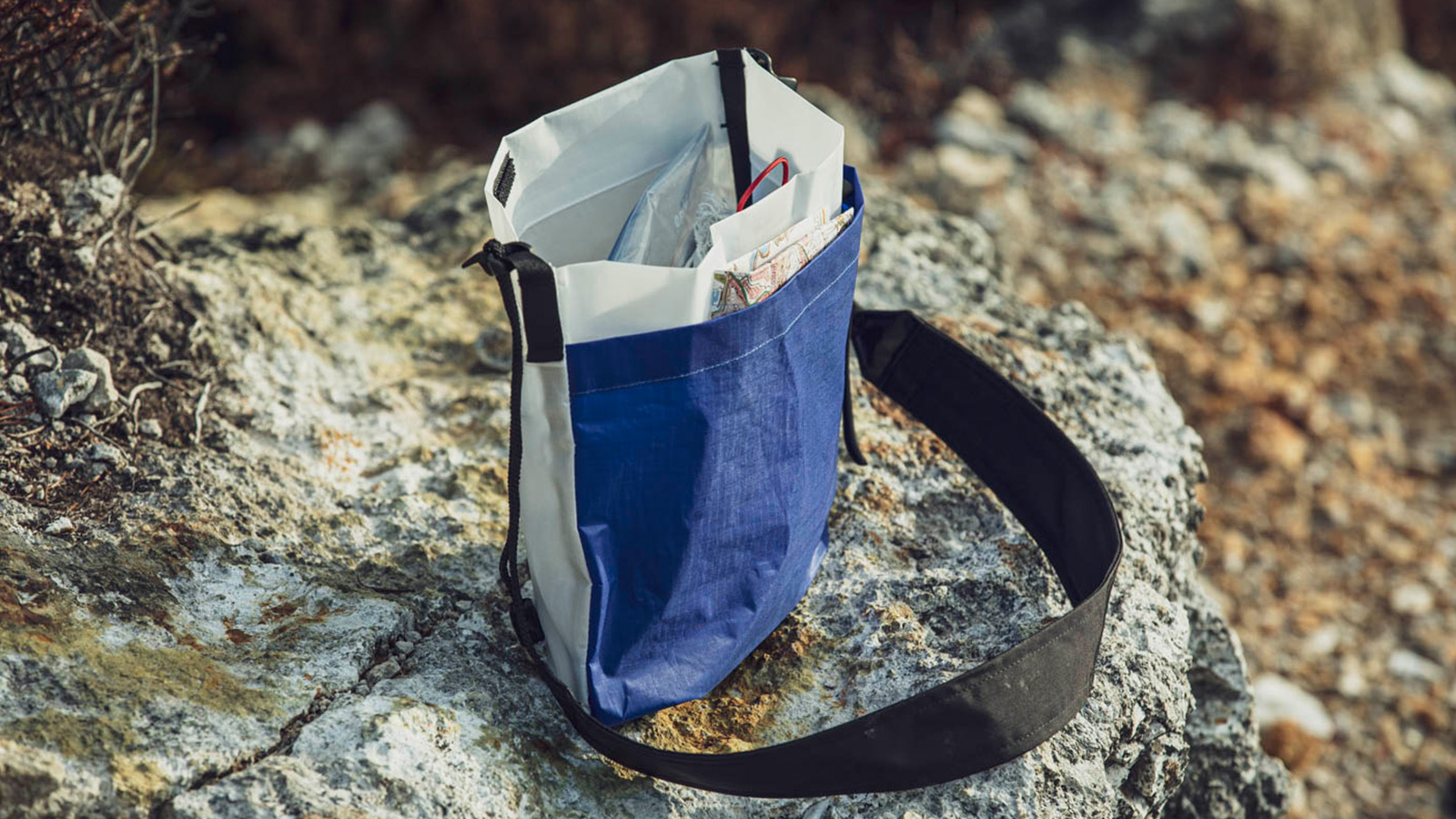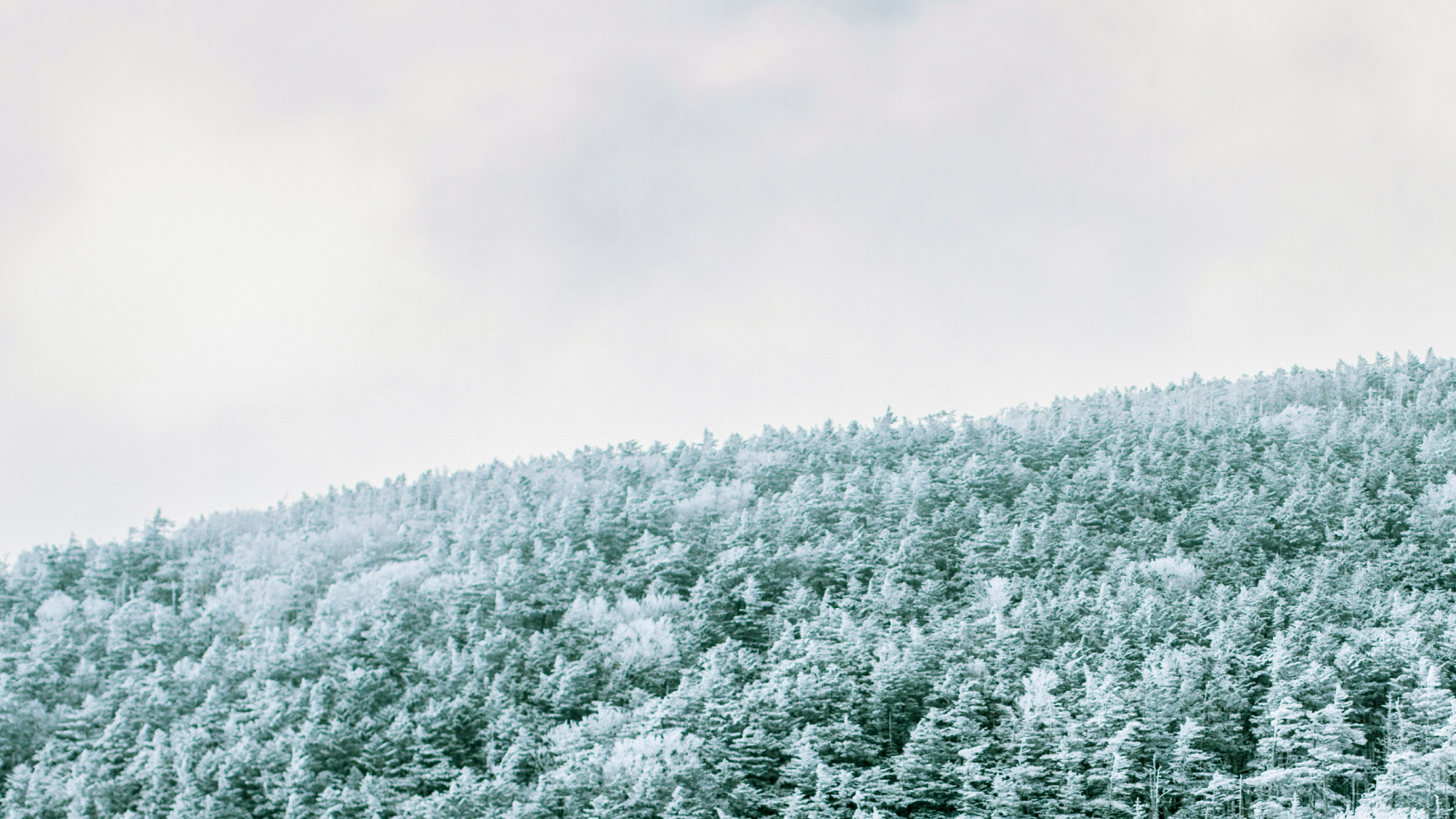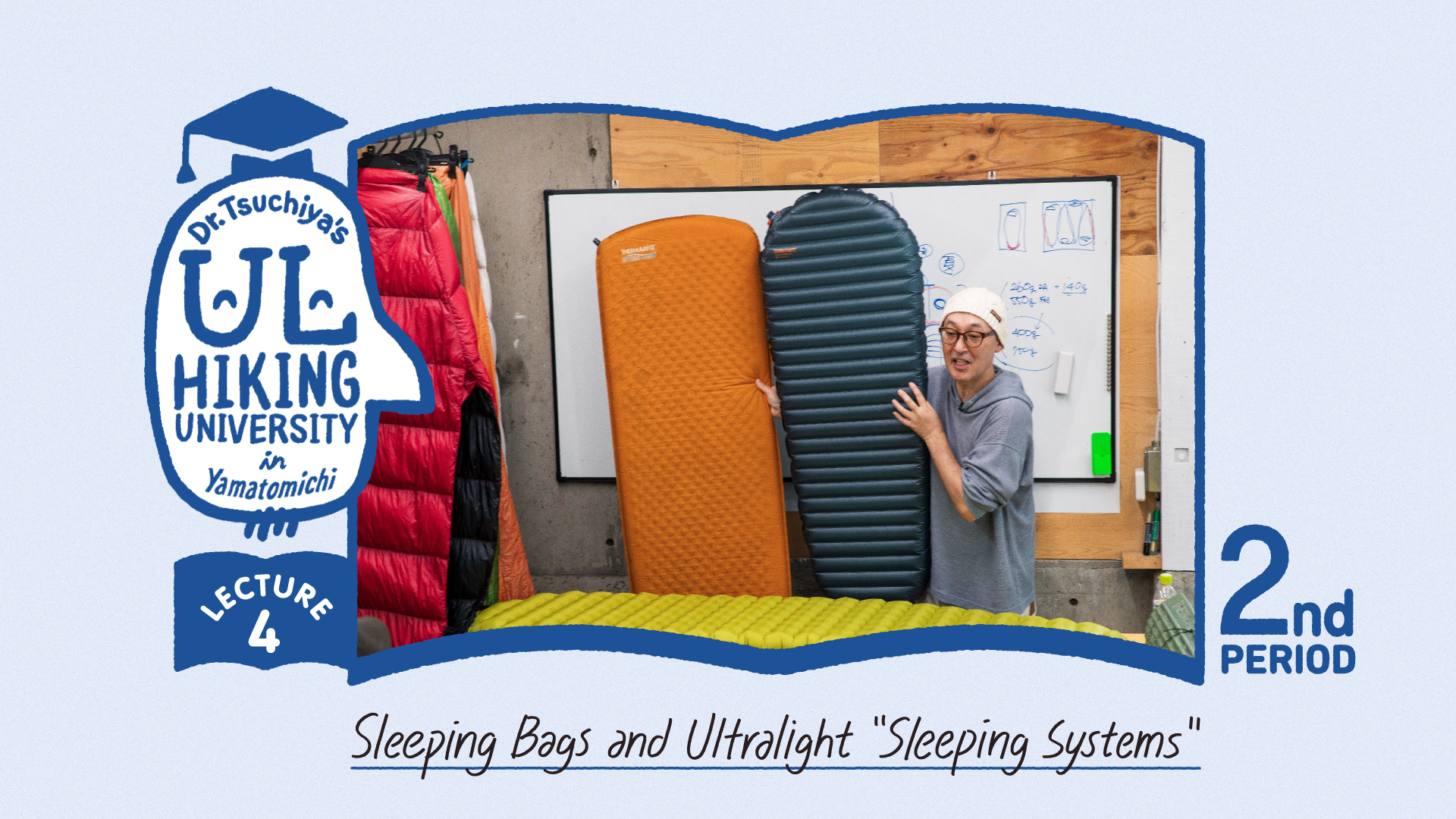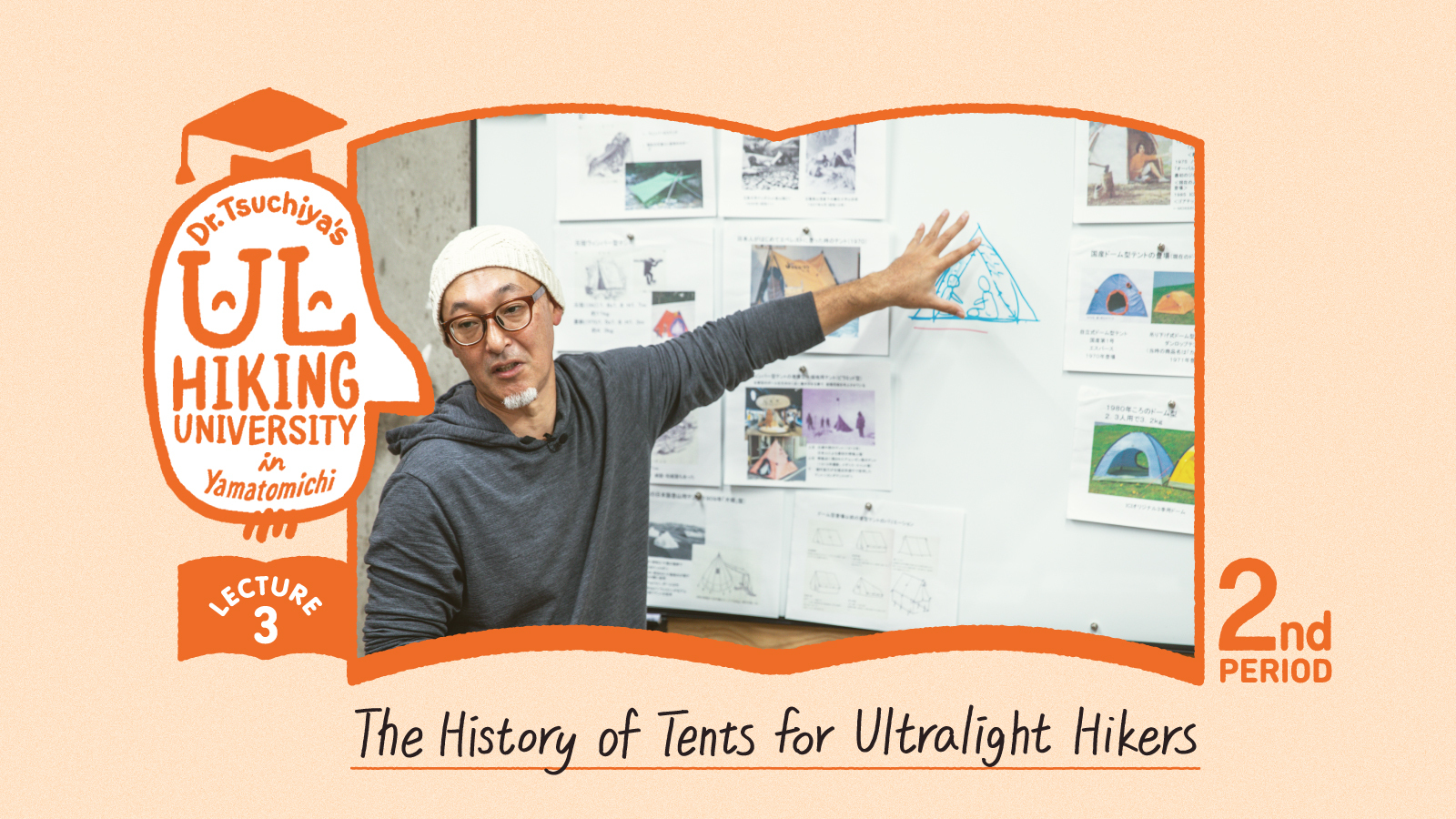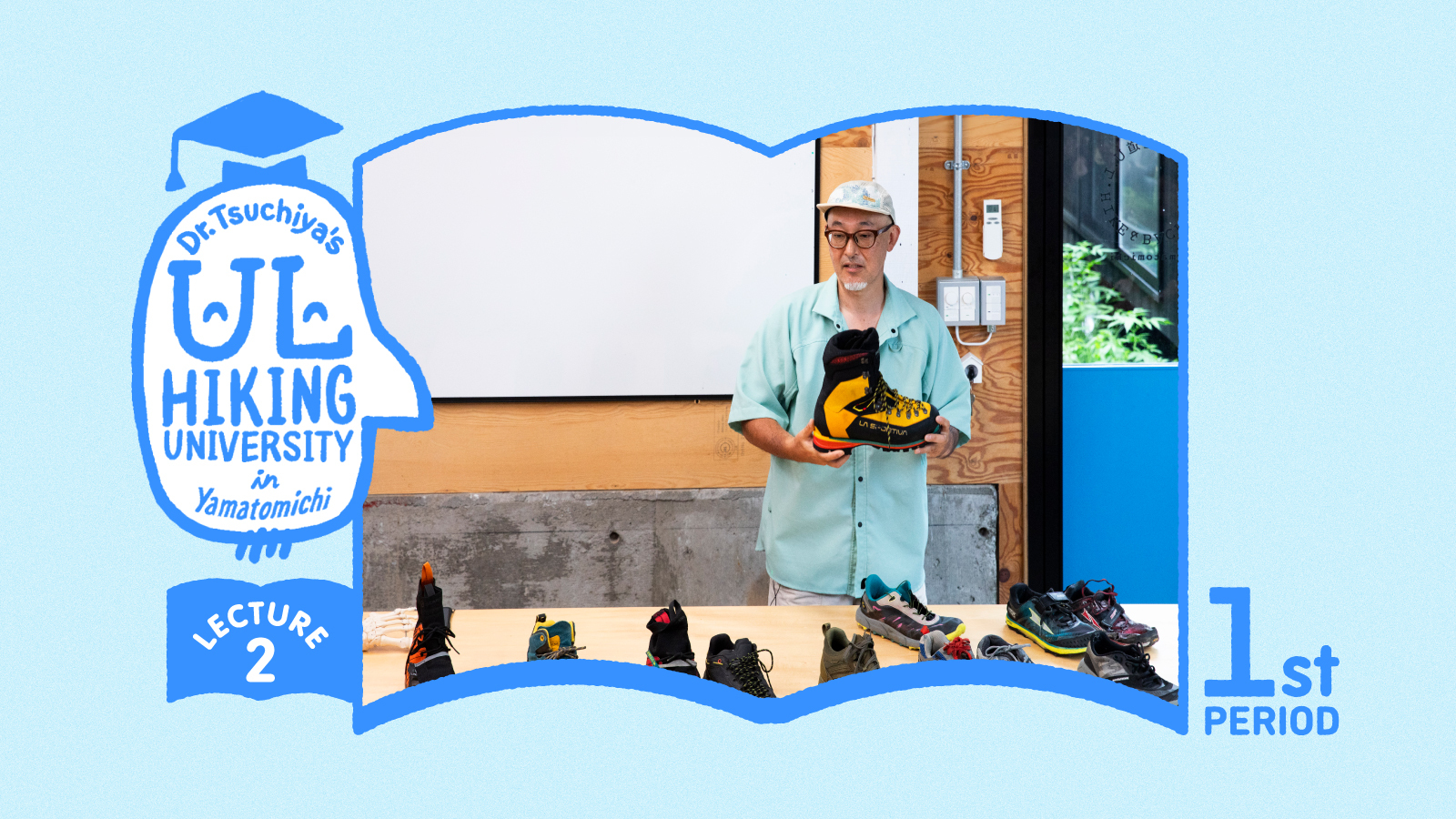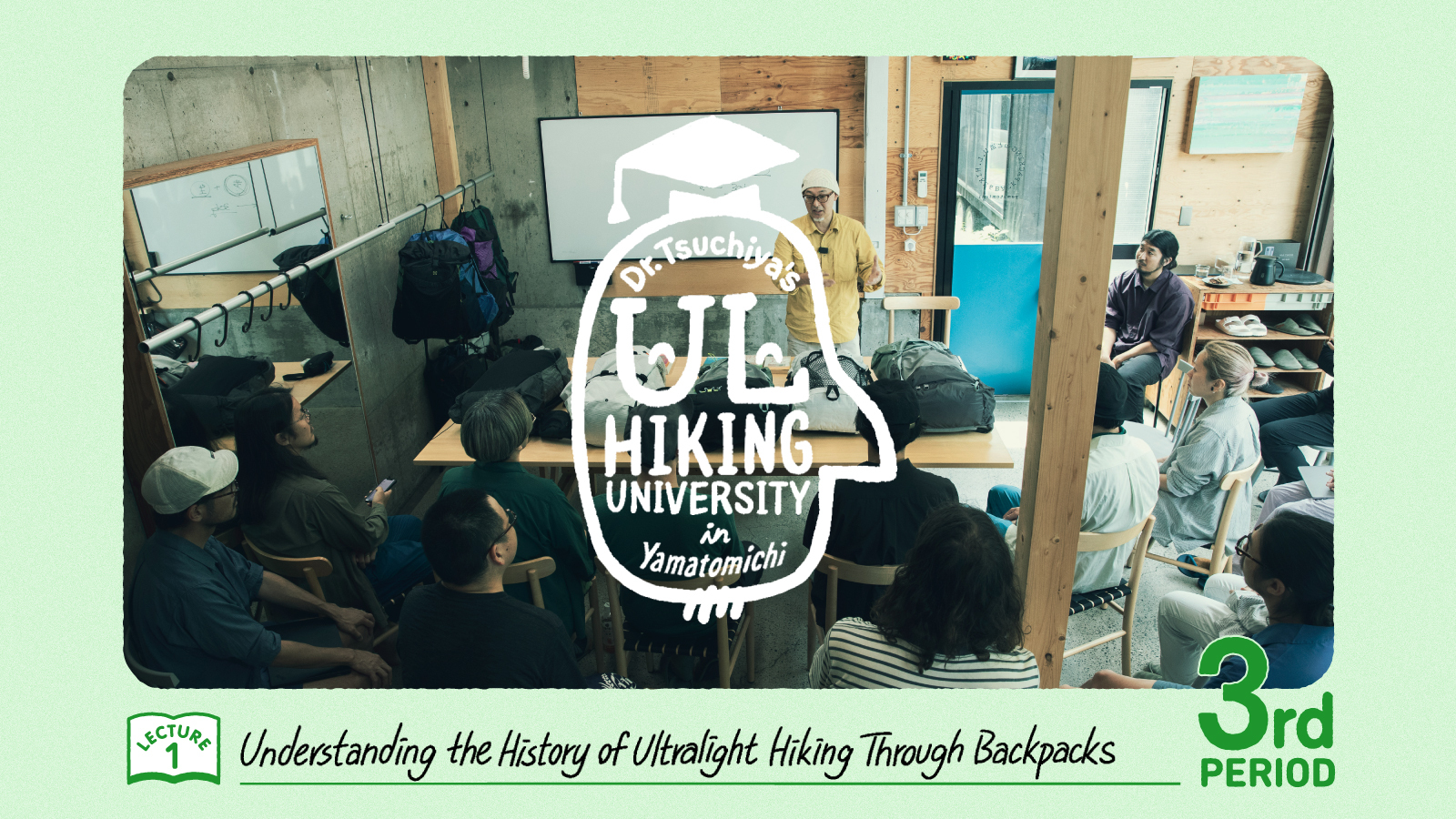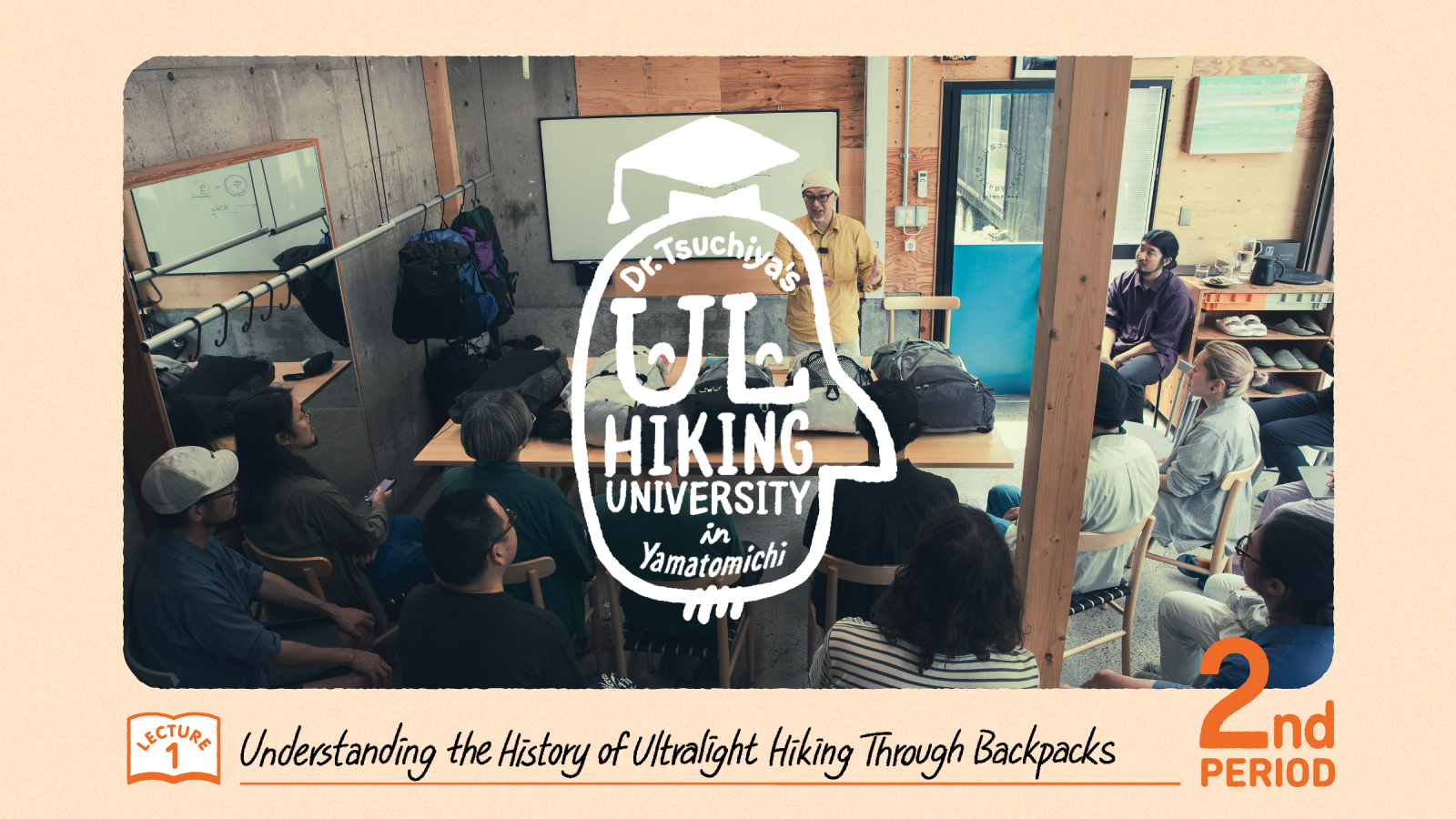Lecture 1: Understanding the History of Ultralight Hiking Through Backpacks
Text: Seimi Rin
Photos: Masaaki Mita
Lecture 1: Understanding the History of Ultralight Hiking Through Backpacks
Text: Seimi Rin
Photos: Masaaki Mita
Tomoyoshi Tsuchiya, owner of Hiker’s Depot in Tokyo and one of Japan’s ultralight hiking pioneers, is the author of Ultralight Hiking (2011) and a frequent Yamatomichi collaborator. Every few months, Tsuchiya will host a lecture at Yamatomichi’s Laboratory, in Kamakura, covering the history of ultralight hiking and the evolution of its practitioners’ gear, from packs and tents to shoes and sleeping bags. His first lecture explores the birth of ultralight hiking backpacks. In the second part of this series, we will explain how ultralight backpacks, which emerged in the late 1990s, and the industry around it have changed over the past quarter century.
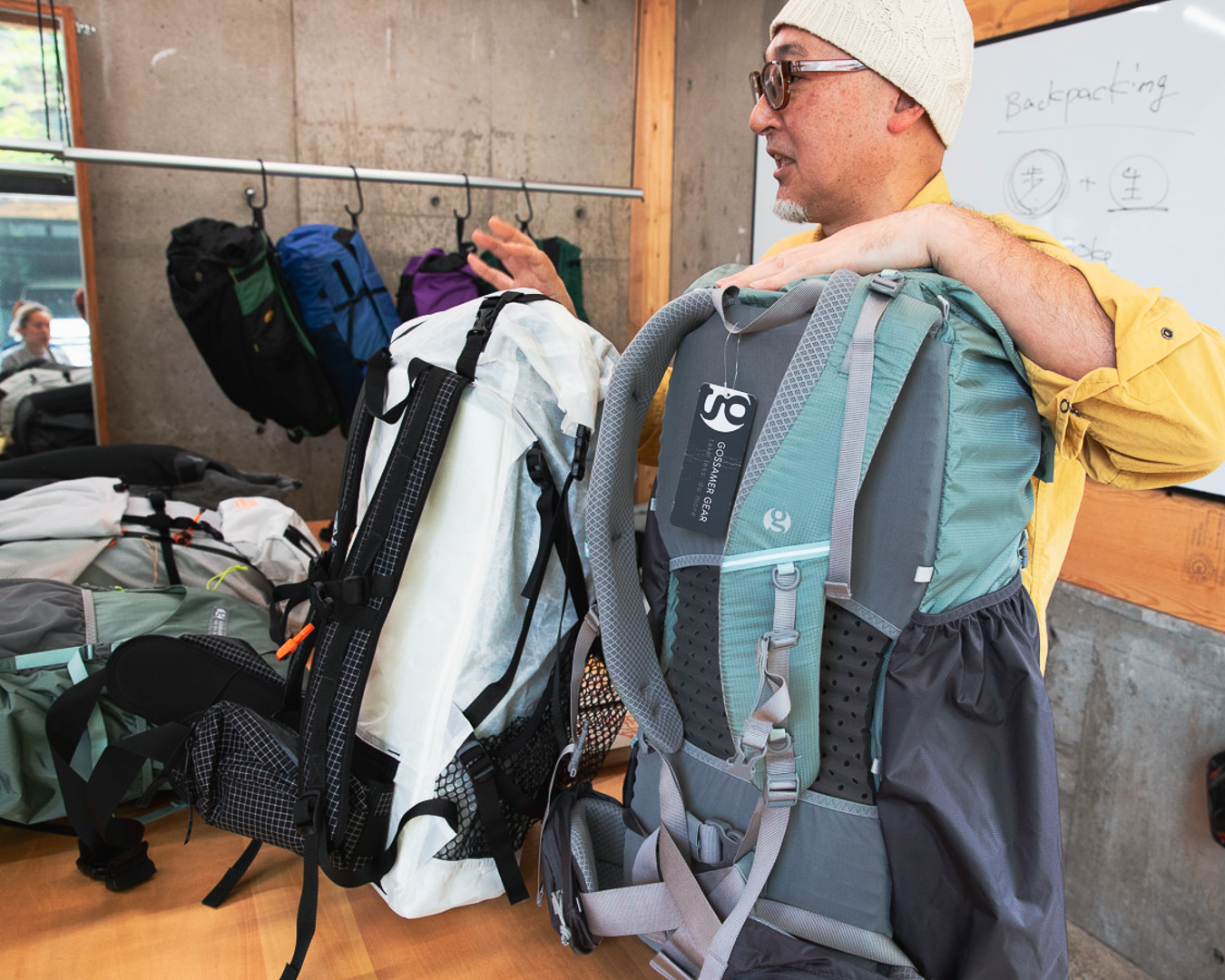
Tomoyoshi Tsuchiya, owner of Hiker’s Depot in Tokyo, one of Japan’s ultralight hiking pioneers and author of Ultralight Hiking (2011).
From 2000: Hip belts and frames on ultralight backpacks?
In Part 1, I talked about how ultralight backpacks used for long-distance hiking became popular for weekend use, leading to the rise of ultralight hiking in Japan. In the US, long-distance hiking continued to win converts. Against this backdrop, Logan, Utah-based ULA Equipment unveiled its CDT pack.

ULA Equipment’s CDT weighed 840g and had a maximum capacity of 54 L. The pack shown was sold before 2023.

The CDT’s back panel had a removable pad but no frame. The hip belt was also removable.
As the name suggests, this backpack was designed for thru-hiking the Continental Divide Trail* (CDT). At first glance, it resembled traditional ultralight gear, such as Ray-Way packs, but it came with a sturdy hip belt, which added an extra layer of support. This was the beginning of what led to the current generation of ultralight hiking gear.
*The Continental Divide Trail is a 5,000-km-long trail that runs from the Mexican border to the Canadian border, following the Rocky Mountains and crossing the continental divide of North America. It is one of three major US trails.
In Part 1, I covered Ray Jardine’s methodology, which required serious commitment to ultralight principles. Yamatomichi customers often say, “I’m interested in ultralight hiking, but I’m not sure about sleeping under a tarp or a simple shelter.” They don’t want to go fully ultralight; they only want to incorporate some elements.
It’s a similar story in the US. Among long-distance hikers, those who can thru-hike with ultralight gear often adhere to the Ray-Way, but they’re rare and somewhat extreme. Around 2000, hip belts began appearing on ultralight backpacks –– recognition that there was a need for minimal support. This was especially true with backpacks designed for thru-hikes, which required carrying up to a week’s worth of food. Ultralight purists protested: they felt that hip belts didn’t belong on ultralight backpacks. The turning point came when Gossamer Gear, originally known for making simple ultralight backpacks with thinner lightweight fabric than those of GoLite, introduced the Mariposa backpack, which featured both a hip belt and a frame.

Gossamer Gear’s Mariposa 60 was a large, lightweight backpack with a maximum capacity of 60 L and a total weight of 884 g (size M). This was the model sold until 2023.

The pack features a removable back pad –– a distinctive feature of Gossamer Gear. Although the pack has a frame, the shoulder attachment’s high positioning means the shoulder stabilizers play a supporting role.
The frame, once discarded for its weight, made a comeback. At the time, ultralight hikers wondered whether this was a step backward. The Mariposa emerged as a solution to the needs of PCT hikers.
In 2009, when I thru-hiked the 340-km John Muir Trail –– traversing California’s Sierra Nevada mountains and cutting through three national parks, Yosemite, Kings Canyon and Sequoia –– with a paper-thin backpack called the Z1 from ZPacks, I was excited. I figured that there would be many ultralight enthusiasts along the JMT and in the US. Turns out, I was wrong. Back then, most hikers along the JMT and PCT carried 50-60L packs with an internal frame. While the ultralight movement was already gaining traction in the US among enthusiasts and weekend hikers, thru-hikers naturally sought out lightweight gear. But many of them also wanted a pack with a frame.
From 2010: Ultralight backpacks continue to become more durable and robust
The ultralight pack-with-frame trend accelerated beginning in 2010. In 2011, Hyperlite Mountain Gear released its Windrider pack with an aluminum frame. Around the same time, ZPacks introduced a similar pack, featuring aluminum stays and a robust hip belt, marking a sudden shift in the market. Fundamentally, everything that’s happening now is an extension of this trend.

Hyperlite Mountain Gear’s flagship 2400 Windrider weighed 798 g and had a maximum capacity of 45 L. It led the evolution of ultralight packs in the 2010s, pioneering the use of new lightweight, durable, waterproof, ripstop composite materials (Dyneema® Composite Fabrics) that were designed for use in sails for America’s Cup racing boats.

The pack’s back panel has an integrated frame but does not include a mesh pad, instead relying on the waterproof performance of Dyneema® Composite Fabrics.
The history of outdoor activities in the US has its roots in the counterculture to an urban, economics-centric lifestyle. Around 2010, long-distance hiking in the US experienced a surge in popularity. Writer Cheryl Strayed’s bestselling 2010 memoir, Wild: From Lost to Found on the Pacific Crest Trail, describing her 1995 PCT trek and journey of self-discovery and the 2014 film, Wild, starring Reese Witherspoon as Strayed, helped to spark broader interest in long-distance hiking. More people began to thru-hike the PCT and the Appalachian Trail* (AT), and backpacks, designed to be lightweight but also featuring frames and hip belts, played a significant role.
*The Appalachian Trail, one of the three major US trails, is a 3,500-km-long trail running north-south along the Appalachian Mountains.
From 2020: A return to more traditional backpacking gear?
With the growth of the hiking population, there’s been a shift toward convenience. For example: opting for a gas stove to avoid the extra hassle of an alcohol stove, or sleeping in a tent with a floor to keep out bugs that might be a nuisance under just a tarp. More convenience has led to heavier gear. You see this shift clearly this year with products like Gossamer Gear’s new Mariposa.

Gossamer Gear’s Mariposa 60 R is slightly heavier than older models, with a maximum capacity of 60 L and a total weight of 962 g (size M). But improvements in the back panel structure mean better comfort and rigidity.

When comparing the back panels of the old (left) and current model (right), you’ll notice that the shoulder straps attach in different places. The structure of the shoulder stabilizers has also changed, and is now similar to a traditional frame pack.
The new Mariposa has a longer frame and lower shoulder strap positions than past models. It also features newly added shoulder stabilizers. It’s essentially the same structure as a typical framed backpack. The Mystery Ranch Radix 47 is another model that was released this year. At 1.6 kg, it isn’t lightweight, but it’s specifically designed for long-distance hikers, and features the Bozeman, Montana-based brand’s unique harness structure as well as shoulder stabilizers.

Mystery Ranch’s Radix 47 is a 45 L backpack that weighs 1.6 kg –– heavy for ultralight standards but significantly lighter than the brand’s typical heavy-duty packs. The pack has a large vertical front zipper, allowing easy access to the main compartment.

The aluminum frame on the pack’s back panel and hip belt can be removed to shed weight.
Salt Lake City, Utah-based Black Diamond launched its Beta Light with similar features.

Black Diamond’s Beta Light 45, weighing 890 g and sporting a capacity of 40 L, features an open top (no rain cover), a large mesh pocket, shoulder straps resembling those of a running vest, and a frame and hip belt made of Ultra 200 material, in line with other ultralight packs.

The Beta Light 45’s frame and hip belt are removable, so it can be converted into an ultralight backpack.
Ultralight backpacks have evolved from extremely simple packs, such as Ray-Ways, that were conceived of to improve thru-hiking success rates. Next came ultralight backpacks like the Murmur that were made of ultra-thin fabrics for weekends or short multi-day hikes. Later, ultralight packs came with more support in the form of hip belts, aluminum frames and shoulder stabilizers. There’s much debate about whether these added features moved the industry forward or backward. But today most brands with roots in ultralight hiking are now incorporating support features into packs made for long-distance hikers.
The undiminished spirit of ultralight hiking
The ultralight movement isn’t dead.
Even back in Ray Jardine’s time, ultralight diehards were the minority. With outdoor brands like Osprey and Gregory dominating the backpack market, ultralight brands have served as a rebuttal to the mainstream. Being part of this counterculture is fine. While the industry has changed, there’s no lack of ultralight backpacks that stick to simplicity –– Yamatomichi, for instance.
One standout example of simplicity is Pa’lante, founded in Bishop, California, in 2015. What’s intriguing about Palante is how clearly the hiking style it represents is reflected in its products.
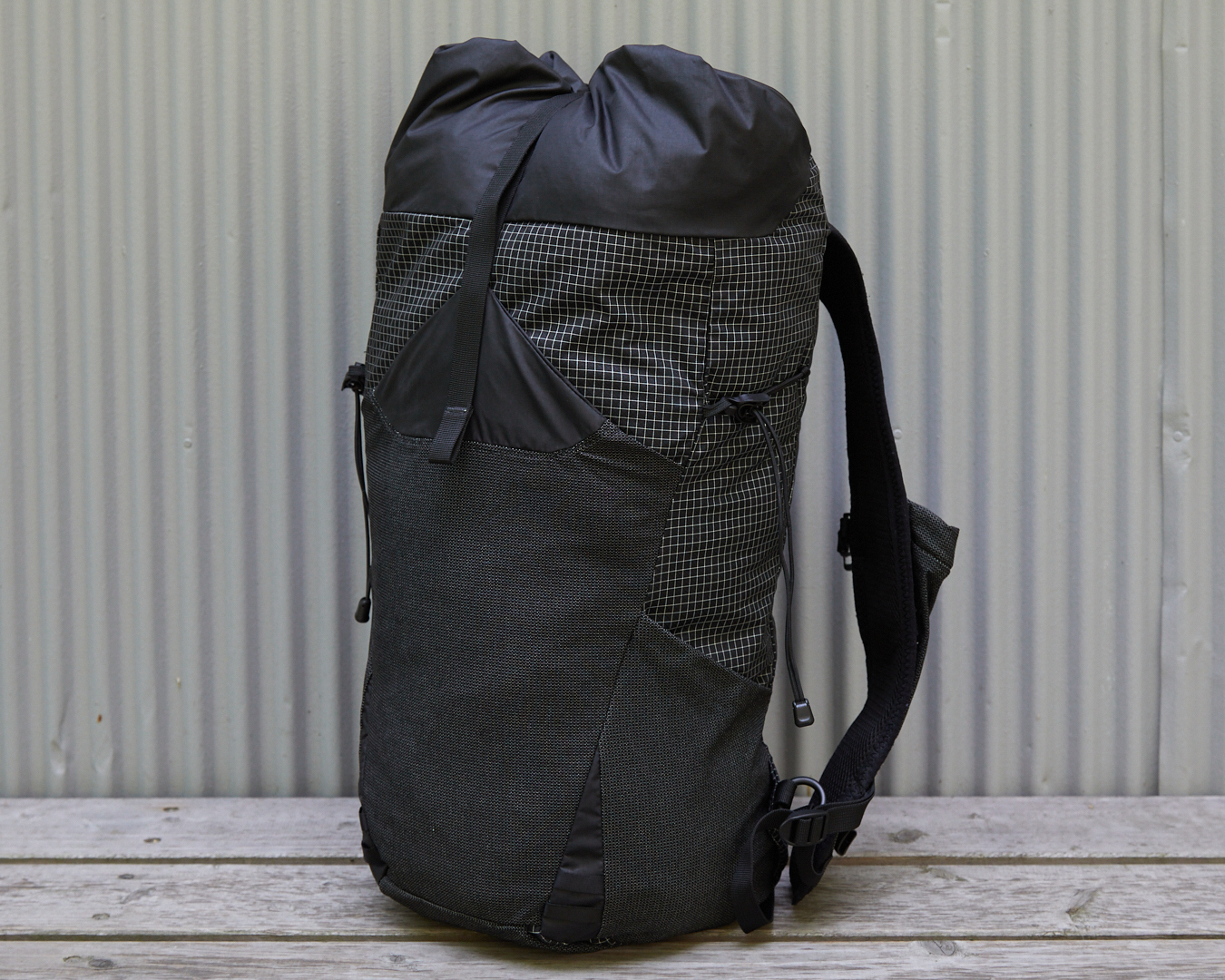
Pa’lante’s Joey is a backpack in the FKT, or Fastest Known Time, mold. It’s a trendsetter among ultralight packs with its 24 L capacity and 379 g weight (Ultraweave version).
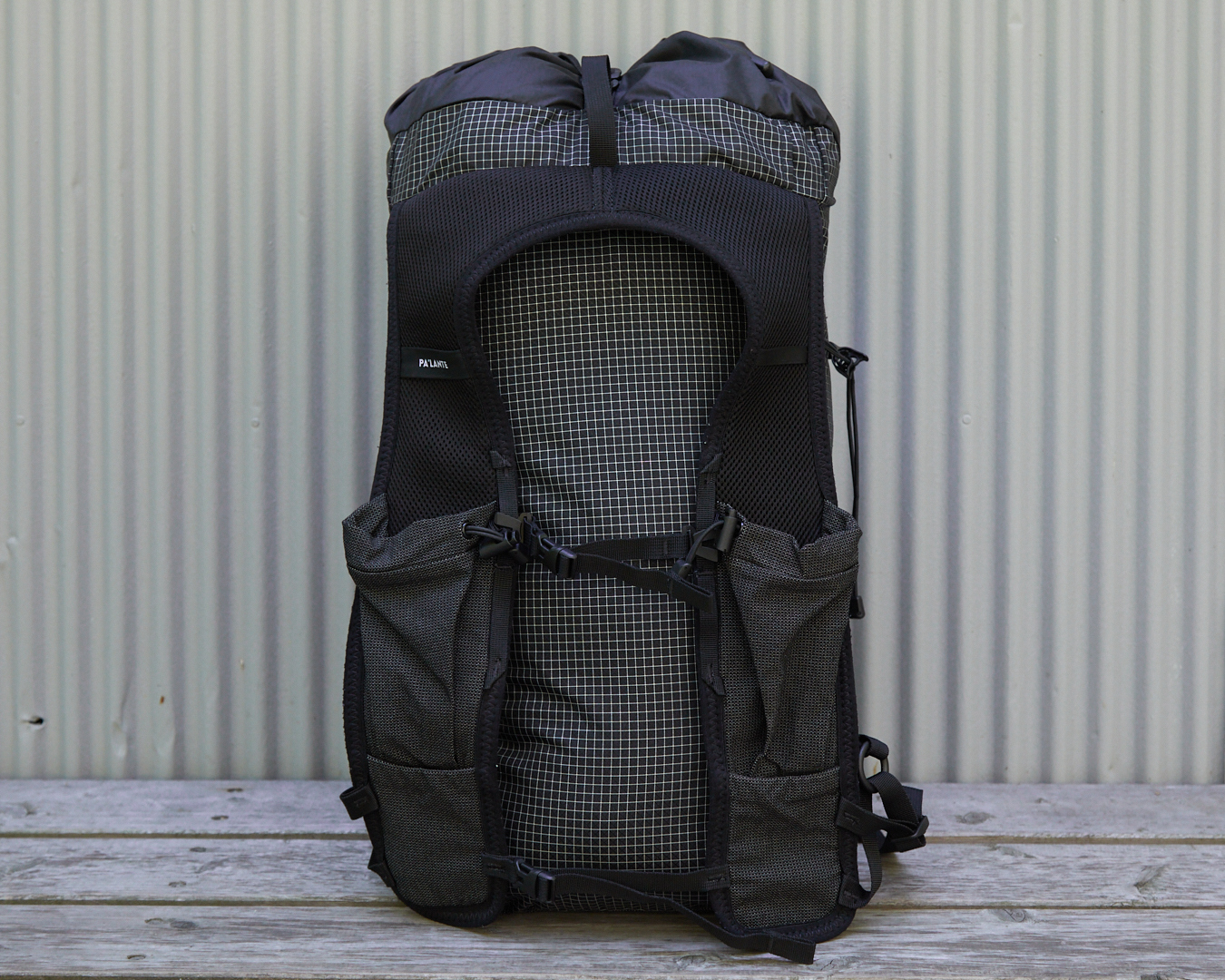
Featuring shoulder pockets, ultra-mesh fabric and a stretchy bottom pocket, it embodies the essence of modern ultralight backpacking.
What makes brands stand out is not just creating beautiful or cool things, but also changing the status quo. In other words: products that alter our ideas about travel.
Ray-Way did this by producing the prototypes for ultralight hiking. Gossamer Gear also did this by publishing the patterns* for its early products (one example is the G-4, which today is sold at Quest Outfitters, in Sarasota, Florida) and by adding frames to ultralight packs –– a trend in long-distance hiking that continues to this day. Hyperlite Mountain Gear emphasized not only lightweight gear for hiking but also for a wider range of outdoor activities, such as ice climbing and packrafting. Pa’lante, started by Andrew Bentz and business partner John Zahorian in 2016, focused on walking: they came up with the Joey pack as a solution to so-called FKT (Fastest Known Time*) –– covering long distances with minimal gear, walking almost non-stop without having to take off the pack –– along the John Muir Trail. Its smaller size and numerous easily accessible pockets made it a symbol of the FKT philosophy.
*FKT is a type of timed trail running that spread from the US. Routes must be at least 8 km long or have at least 150 m of elevation gain, and enthusiasts compete by uploading to the FKT website their best times hiking or running approved trails.
Pa’lante’s packs have shoulder pockets, similar to running vests, but it was the packs’ bottom stretch pocket that had the biggest impact. If you put anything into the pocket, you can’t put the pack down. Some would argue: You shouldn’t put the pack down at all. It’s supposed to be lightweight so you won’t get tired carrying it. Which is why Pa’lante’s packs have their pointed shape. These are packs that are basically not suitable for the mainstream hiker; they’re made for people who just want to walk. Frankly, if you look closely at Pa’lante packs, they have their shortcomings, but the brand’s biggest strength is its emphasis on a particular hiking style –– long and fast.
Once in a while, crazy creators like this come along, so the thinking that originated with Ray-Way hasn’t died out. Yamatomichi’s MINI2 pack also bucks market trends. It doesn’t have a frame, and the exterior is soft, so it can be difficult to use if you don’t pack it properly. The same goes for the THREE pack. Although it’s a sizable pack, the hip belt is just a thin strip because it’s meant to carry an ultralight tent. If you carry this pack and your shoulders hurt, it means that your load is too heavy.
When Yamatomichi founder Akira Natsume released the ONE pack as a core Yamatomichi product, I thought to myself: Wouldn’t it be better to win acceptance from customers by making a bag the size of a MINI first? But Akira was stubborn. He felt that it had to be the ONE. That’s because he was very particular about selling as the brand’s core product a pack that was based on his own experience hiking long trails, including the JMT. Rather than thinking about whether the product would sell or whether it would be a hit with mainstream customers, he released gear that reflected what he felt stayed true to the ultralight mindset.

What do consumers want from ultralight gear?
In the US, there are plenty of ultralight hikers who are passionate about completing trails of around 1,000 km –– the 1290-km-long Arizona Trail, the 805-km-long Colorado Trail and the somewhat shorter 438-km-long Vermont Long Trail, for example. So even if ultralight packs nowadays come with frames and hip belts, the diehard side of ultralight hiking will not disappear. Even so, it takes courage to pursue only what’s absolutely necessary; to simplify your lifestyle.
Most people buy things on a daily basis for the added convenience. For the same reason, your belongings seem to increase every time you move. We shouldn’t reject as bad that we are taking on more belongings, and there is no right or wrong when it comes to regular versus ultralight packing. We should consider our own beliefs and preferences.
I don’t carry a backpack with a frame, and I have no intention of using one in the future. But I can still take pleasure in hiking with others who carry these kinds of backpacks. I think getting more people to enjoy a simpler hiking style is what my store, Hiker’s Depot (whose specialty is promoting ultralight hiking), and Yamatomichi (whose core business is built around ultralight hiking) are doing. It’s important that we accept all styles of hiking, rather than rejecting them, while also believing that there’s beauty in what we stand for.
I have gone from being influenced by Colin Fletcher’s The Complete Walker –– the book that introduced US backpacking culture to Japan in 1978, when packs were large and heavy –– to dropping that in favor of Ray Jardine’s PCT Beyond Backpacking (1998) and his Ray-Way ultralight hiking mindset. Two decades later, I seem to be swinging back toward the middle. I believe that one day we will end up back at the stripped-down ultralight style. Which is why I think what’s most needed now is to create the next generation of ultralight backpacks while also offering a model, an ideal of ultralight hiking.
So far, we have looked at changing ultralight hiking and backpack trends. Next, I’ll talk about the practical side of how to carry an ultralight backpack.
